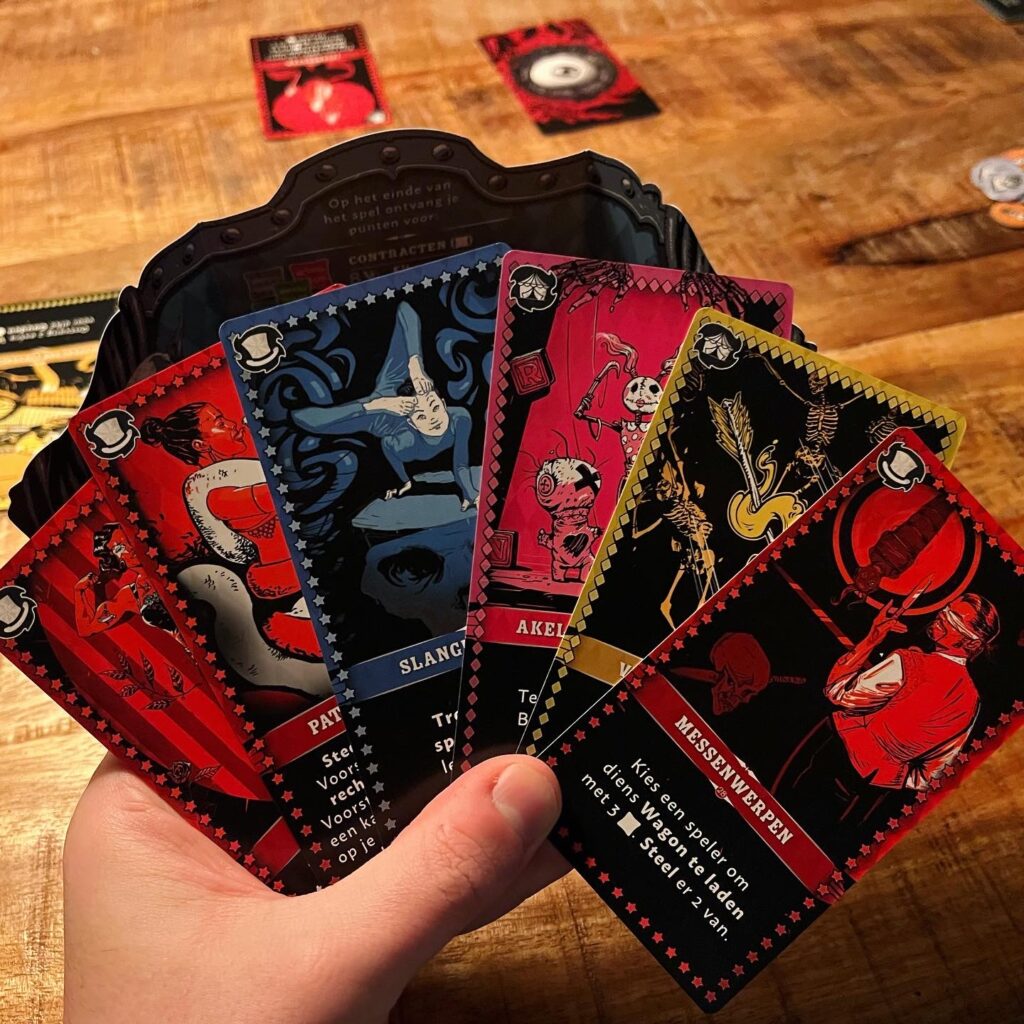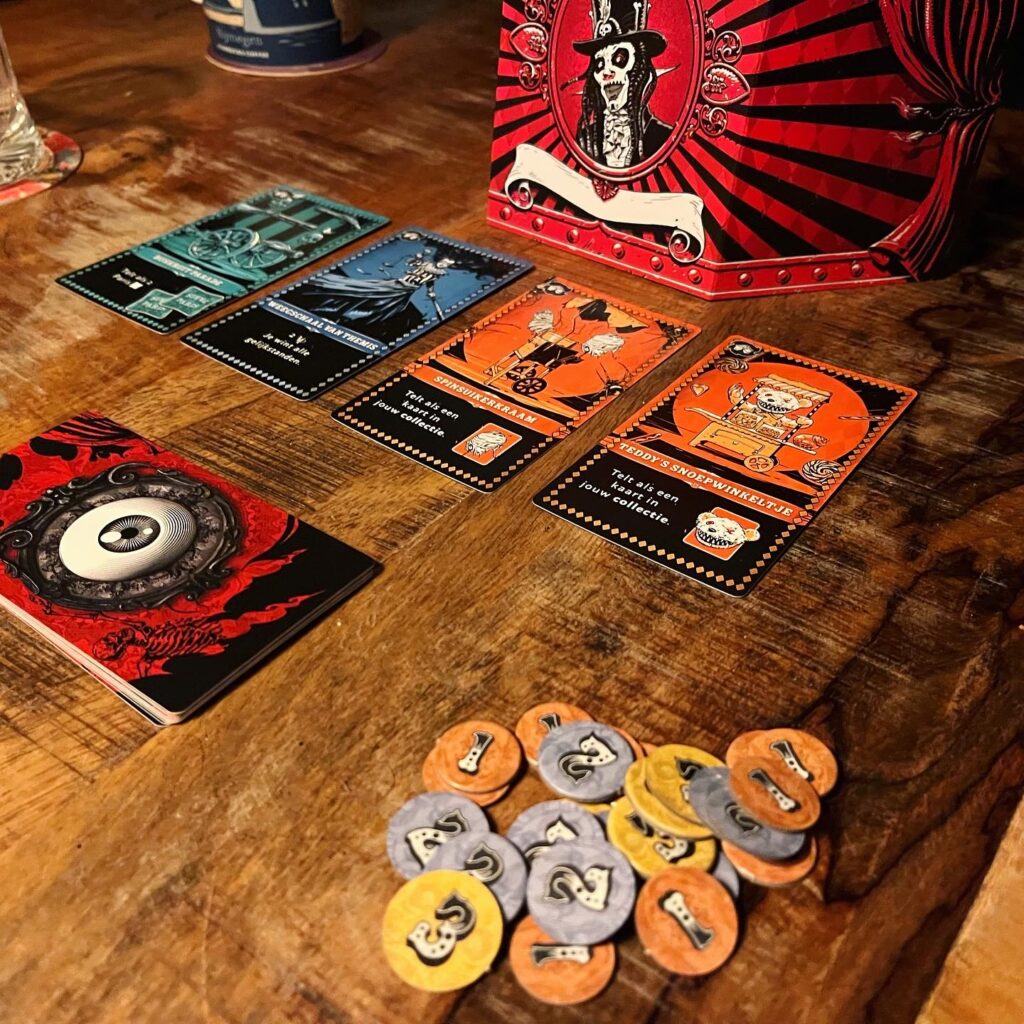Big tents, loud music (Entry of the Gladiators anyone?) scary clowns, special acts and whole lot of freaks both on stage and in the audience. As the Rolling Stones once sang: The Circus is Back in Town! In the game Dreadful Circus, the circus has a dark edge and the various operators of these travelling companies try to win over the best attractions and artists. Players thereby imagine themselves lord and master of a dark circus with more atrocities than even P.T Barnum has on his record…. Is your version of entertainment the best outlet or rather an exploitative one?
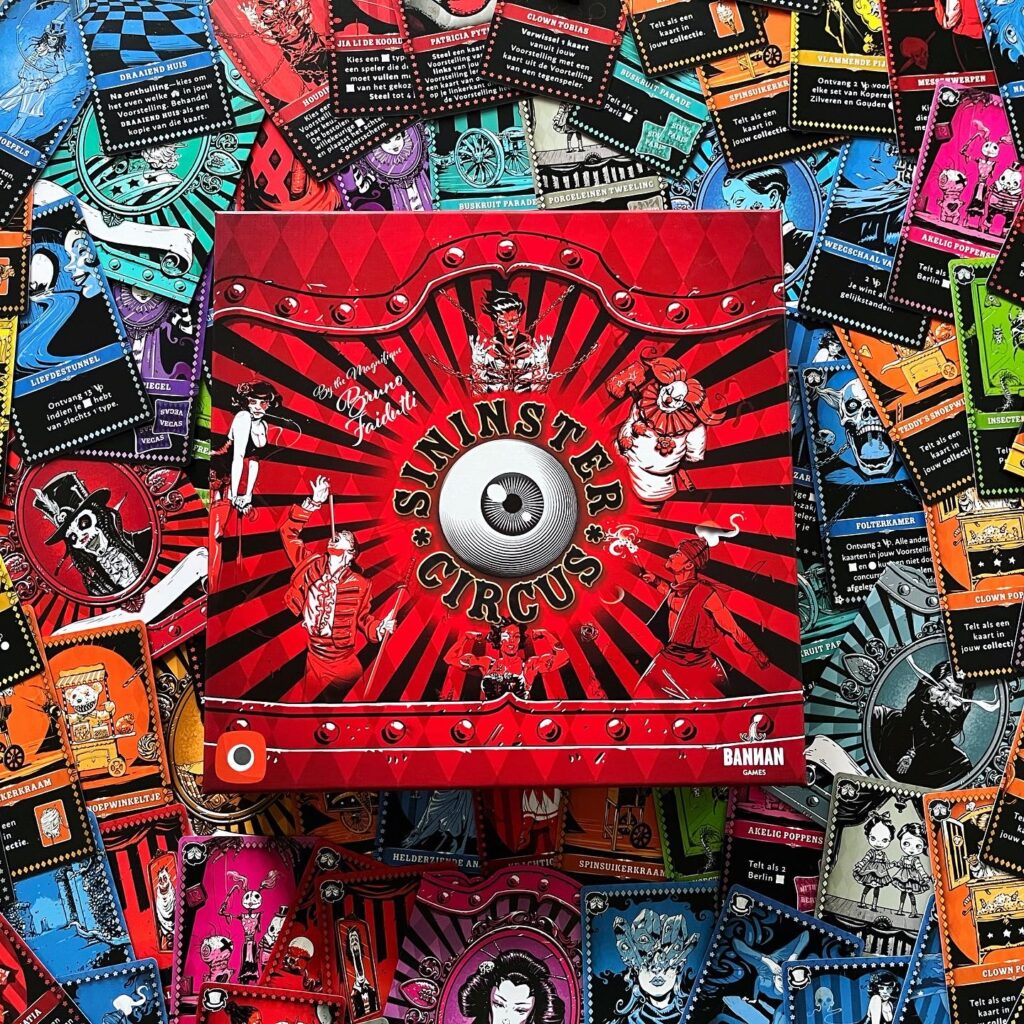
Background
A circus is a travelling company (not always the best of company) of performers who put on various shows. These performers include clowns (scary probably), acrobats, trained animals, musicians, dancers, stuntmen and women, tightrope walkers, jugglers, magicians, ventriloquists, unicyclists and (especially in the old days) a whole host of freaks such as the bearded woman, wolfman, elephant man, tattoo man and other characters who would not be out of place in David Lynch films. The term circus also describes the performance itself, which has taken various forms throughout its 250 or so years of modern history.
Entertainment and also travelling companies naturally existed throughout the history of human existence. Think, for example, of bards and theatre companies during the later Middle Ages. Philip Astley, who was particularly noted for spectacular horse shows, is mostly considered the father of the modern circus that originated in England. The best-known person exploiting (in both meanings of this word) circus companies is probably P.T. Barnum, who has regained some popularity among the general public in recent years because of the musical film The Greatest Showman: a clever example of circus washing. P.T. Barnum was no sweetheart in real life and was best known for his misuse of staff, theft, fraud, slavery, animal cruelty and adultery. It is actually strange that such a figure should be turned into the main character of a feel good musical film. P.T. Barnum shows that the circus has a dark edge and this dark edge is reflected in Dreadful Circus. Although the game contains colourful cards, the illustrations are darkly atmospheric and so are the differences acts and performers and the interaction with opposing players.
Setup and gameplay
Dreadful Circus is a game for a larger group (please note only from 4 players upwards) in which players bluff and bid on artists and attractions. At the start of the game, each player chooses a screen to hide their contracts and coins from opponents, and the corresponding wagon to secretly bid on various attractions and artists during the game. A deck of cards is placed in the centre of the table and, depending on the number of players, each player receives x number of cards as a starting hand. Each player selects an attraction from their hand and places this card in front of their screen.
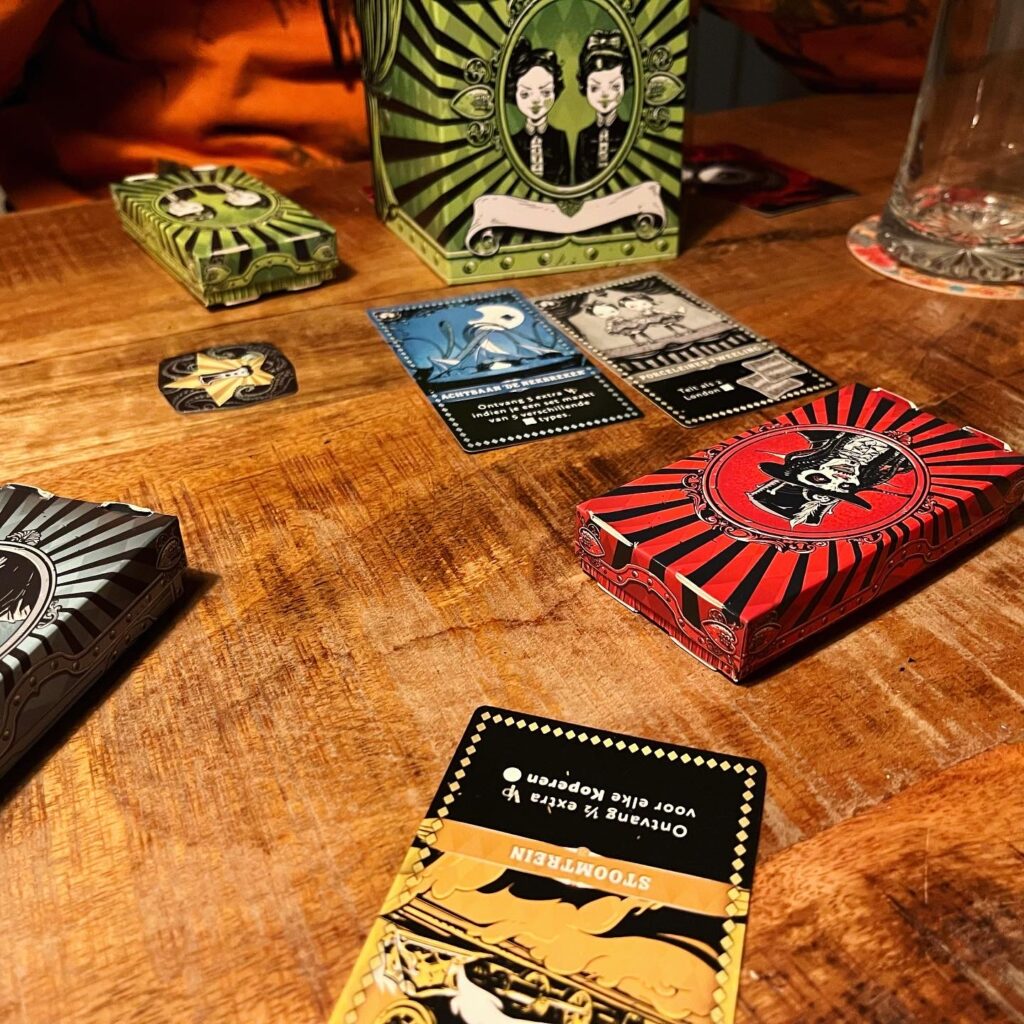

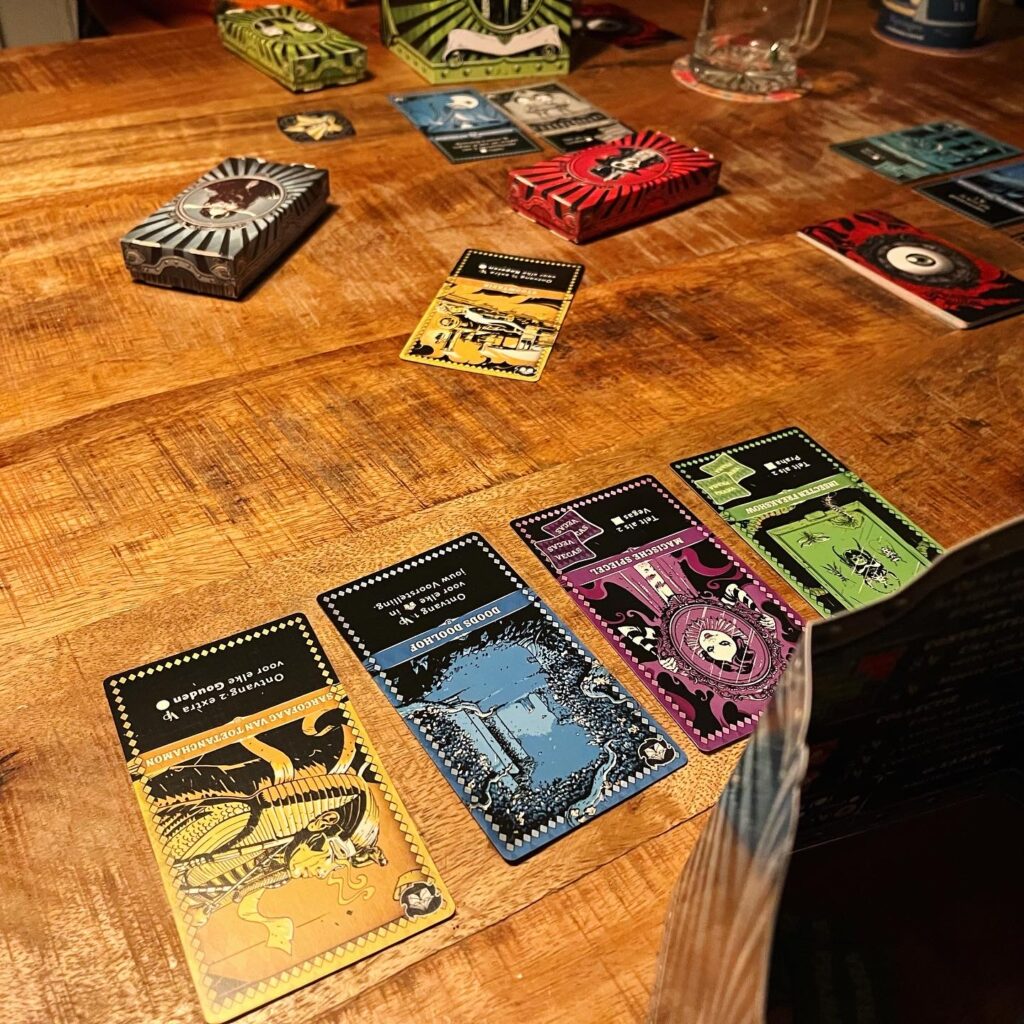
Each turn, a card or cards are auctioned. How many sellers there are during a turn depends on the number of players. The sellers are indicated by chips that move clockwise each turn to the next players. Each seller secretly chooses a card from their hand and places it in the middle of the table. The other players can now secretly bid on the cards by placing coins and contracts in their wagons near the card they want. Players must bid by placing at least 1 contract or 1 coin in their wagons. So you cannot choose not to bid.
Once all players have chosen, each seller may choose a wagon to go with his card. The contents of the wagon are examined in secret and then the seller can choose to accept or reject the bid.
A rejected bid goes back to a bidding player and is therefore no longer available. Attraction cards usually provide points at the end of the game or special ongoing bonuses. Artist cards provide a one-off effect that can affect the course of the game.
Conclusion
The design of Dreadful Circus is very cool and colourful and the colours not only provide atmosphere, but also a clear understanding of the cards as the colours belong to certain effects. Incidentally, all circus clichés pass the review.
Since players do not know what is bid and a rejected bid goes back to the bidding player, choosing and accepting a bid is an interesting and dynamic dilemma with a risk trade-off. To exert influence, players can argue with each other by indicating that their bid is better than others without going into too much detail. This allows players to delightfully rile each other up. Most cards are interesting as they often provide points or useful effects, but the cards are not only useful for yourself, but also for the opponent. Sometimes this makes it not a matter of: “I want this card”, but rather “I don’t want another player to receive this card”. This kind of interaction together with the bluffing element through blind bidding and risk assessment make for a very entertaining game and fast play for a larger group.
